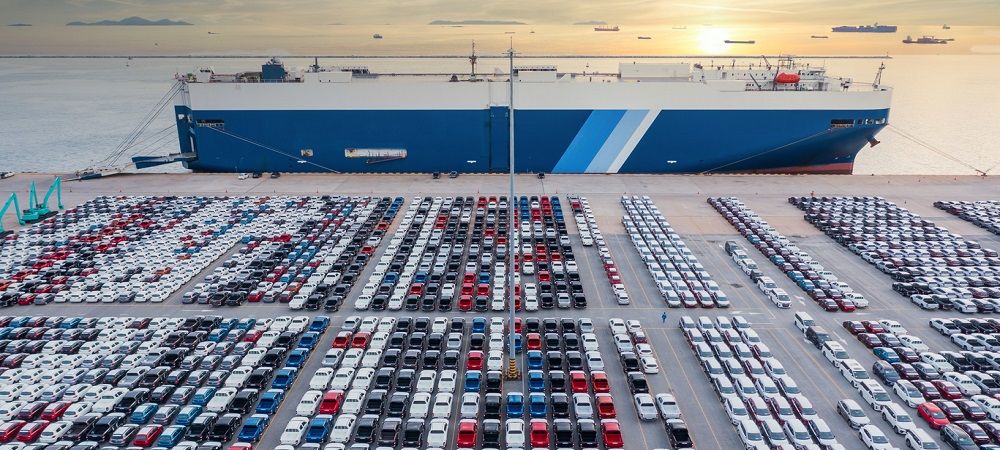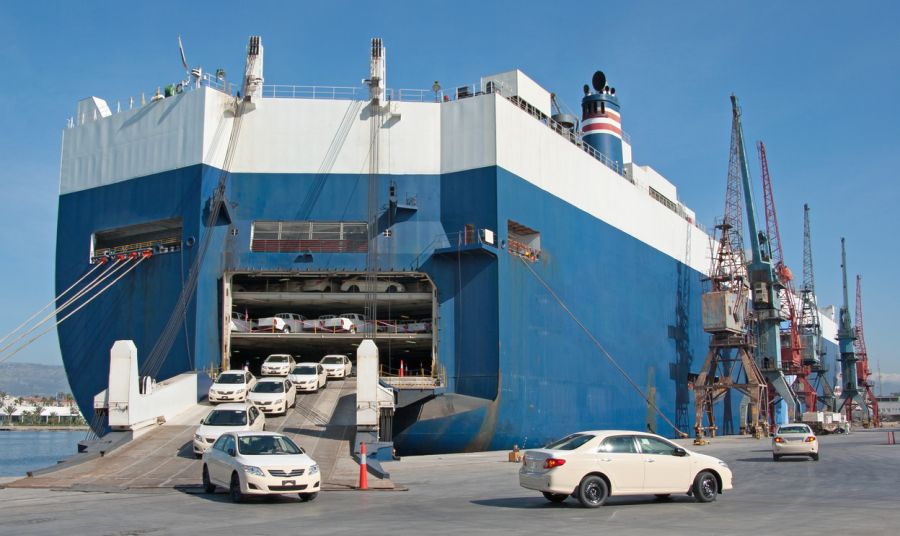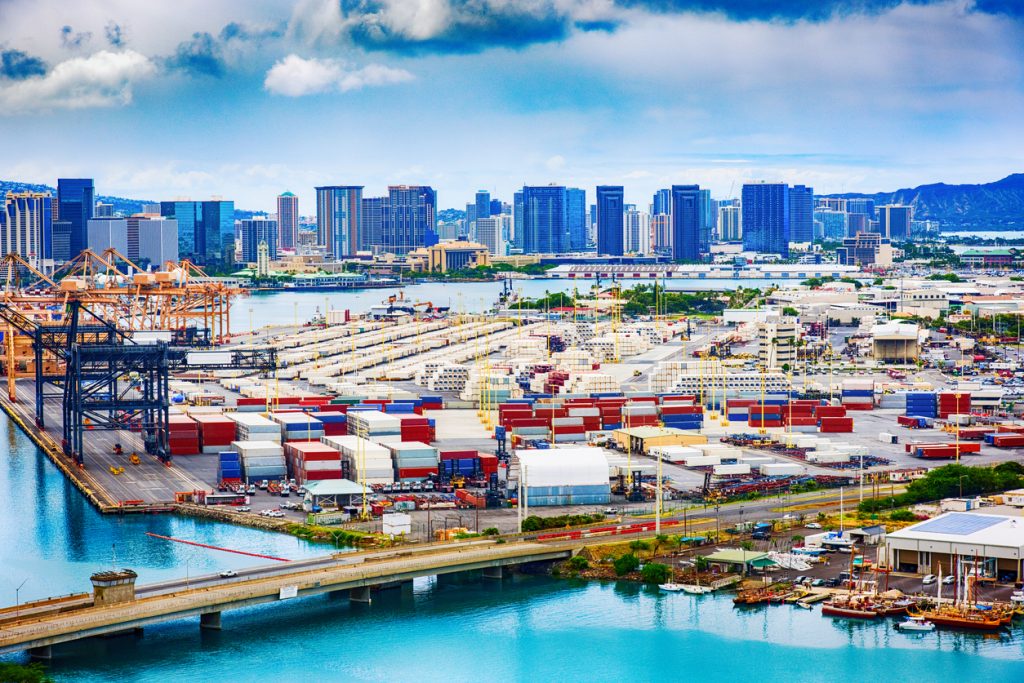
Shipping a Car to Hawaii 101
How to Ship Your Car Step by Step
Shipping a car to Hawaii involves several steps to ensure smooth and successful transport.
- Research and make a list of reputable auto transport companies specializing in shipping vehicles to Hawaii. Consider factors such as experience, customer reviews, licensing, insurance, and Hawaii ports they ship to.
- Obtain quotes from the companies on your list and compare the costs and services offered. Some companies will provide additional services such as enclosed car shipping or expedited car shipping. Provide accurate information about your vehicle, including make, model, dimensions, and weight. Afterward, prepare your vehicle for transport: clean it, remove personal belongings, and ensure the fuel tank is no more than a quarter full. Take detailed photos of the car’s condition as a record before shipping. In the rare case your car gets damaged during shipping, and you need to prove the damage occurred during the shipment and not before, these photos will do the job.
- Choose the shipping method that best suits your needs. Options include Roll-on/Roll-off (RoRo), where the vehicle is driven onto a specialized ship, or container shipping, where the car is secured inside a shipping container.
- At this point, you have enough information to decide on the company that will ship your car to Hawaii. Get the required documentation together, including proof of ownership, vehicle registration, and insurance information. The shipping company will guide you through the required paperwork.
- At the scheduled pickup date, your car will be picked up at your home for shipping by a car carrier truck. The car carrier will then safely drive your car to the departure port.
- Once your car has been successfully shipped to the departure port after ground transport on the car carrier, it will be loaded onto the cargo ship. For RoRo shipping, the vehicle is driven onto the ship’s designated parking area, while container shipping involves securing the car inside a container. Stay in contact with the shipping company to receive updates on the progress of your vehicle. They will provide an estimated transit time for your car to reach Hawaii, which can vary based on various factors.
- Upon arrival to Hawaii, your vehicle will go through customs clearance. Ensure you have all the required documentation, including identification, vehicle title, and any necessary customs forms or fees. Arrange for the pickup of your car from the designated port or location specified by the shipping company. Conduct a thorough inspection of the vehicle to ensure it is in the same condition as when it was shipped.

Shipping Your Car to Hawaii versus Renting a Car in Hawaii
Shipping a car to Hawaii and renting a car there are two options that anyone staying in Hawaii for an extended period or relocating to the islands may consider.
Vacation rental owners staying in Hawaii and using the car for business purposes may have tax benefits by being able to deduct the expenses associated with the shipping. This is not a tax advice; always check with your CPA prior to making any tax decisions.
Shipping a car to Hawaii offers the advantage of having your own vehicle readily available upon arrival. This can provide a sense of familiarity and convenience, especially if you have specific needs or preferences. You can transport personal belongings in the car, which can be especially valuable for long-term stays. Additionally, having your vehicle eliminates the need to search for a rental car or deal with potential availability issues during peak travel seasons.
However, shipping a car to Hawaii has several considerations. The process involves planning, coordination with a shipping company, and additional costs. You will need to research and choose a reputable auto transport company, obtain quotes, and ensure that your vehicle meets the requirements for shipping. Additionally, there are shipping fees, documentation requirements, and potential customs clearance procedures to navigate.
On the other hand, renting a car in Hawaii offers flexibility and convenience. Rental car agencies on the islands offer various vehicle options to suit your needs. Renting allows you to choose a car best suited for your stay, whether a compact car for city driving or an SUV for exploring the island’s scenic routes. Rental companies also provide insurance coverage and roadside assistance, giving you peace of mind during your stay.
Renting a car in Hawaii can be a cost-effective option, especially if you only stay for a short period. You avoid the upfront costs and logistics associated with shipping a vehicle. Rental rates vary depending on the rental duration, vehicle type, and seasonality. It’s advisable to book in advance and compare prices from different rental agencies to secure the best deal.
However, renting a car may have limitations. There may be restrictions on mileage, additional fees for exceeding mileage or fuel usage, and maybe availability constraints during peak tourist seasons. Renting also means adjusting to a new vehicle and potential unfamiliarity with its operation.
Ultimately, the decision between shipping a car to Hawaii and renting one depends on factors such as the duration of your stay, your personal preferences, and your budget. Assessing the costs, convenience, and specific needs will help you make an informed choice that best suits your situation.

How to Save Money when Shipping Your Car to Hawaii
Shipping your car to Hawaii will typically cost between $1,400 and $2,500. The main factors that will determine the cost are the total distance of your shipment, which shipping options you selected, how much notice you gave to your car shipping company and the cost of fuel at the time of your vehicle shipment.
Saving money on shipping a car to Hawaii requires careful planning and consideration. Research and compare quotes from different auto transport companies. Look for reputable companies with positive customer reviews and competitive pricing. Consider both the cost and quality of service when making your decision.
Plan and book your shipping well in advance. Last-minute bookings can result in higher prices due to limited availability. Planning ahead gives you more time to compare options and secure better rates.
Consider using open-air transport instead of enclosed shipping. Open-air transport is generally more cost-effective, although it provides less protection for your vehicle than enclosed shipping. Evaluate the condition and value of your vehicle to determine the level of protection you need.
Flexibility with your shipping dates can also help save money. Some companies offer discounts for flexible shipping schedules or when consolidating multiple vehicles into a single shipment. Check if there are any opportunities to take advantage of these cost-saving options.
Evaluate the need for additional insurance coverage. While the shipping company may provide basic insurance, more coverage may be worth considering for added peace of mind. Review your options based on the value of your vehicle.
Properly prepare your vehicle for shipping. Clean the interior and exterior, remove personal belongings, and ensure the fuel tank is no more than a quarter full. Doing this might avoid additional fees and delays.
Hawaii Car Shipping Transit Times
Shipping a car to Hawaii is a complex process. The shipping time depends on several key elements, such as the origin, shipping method, scheduling, and unforeseen circumstances. Let’s explore these factors in detail, along with specific examples.
The origin of the shipment plays a significant role in determining transit times. For instance, if the car is being shipped from the West Coast of the United States, such as Los Angeles, it can take around 5-7 days to reach the ports in Hawaii. On the other hand, if the vehicle is coming from the East Coast, such as Miami, it may take longer, typically around 14-20 days, due to the additional distance involved.
The chosen shipping method is another crucial factor impacting transit times. Two primary options are roll-on/roll-off (RoRo) and container shipping. RoRo involves loading the car onto a specialized vessel, while container shipping places the vehicle within a container. RoRo tends to have shorter transit times, ranging from 5 to 10 days, as it allows for faster loading and unloading processes. Container shipping, although more secure, often takes longer due to the additional steps involved, typically requiring 10 to 15 days.
Neither of those ranges include ground transport in the US to the port prior to shipping on the cargo ship. Expect ground transport to add 3 to 10 days to the transit time. So, if your shipment was expected to take 7 days on the cargo ship and 5 on the ground prior to that, you can expect your total shipment time to be a minimum of 12 days.

At RoadRunner, our mission is to make the shipment of your car as quick, safe and easy as possible. We have thousands of 5-star reviews from past customers for exceptional vehicle transport services. Most of our customers end up shipping with us again after their first shipment!







